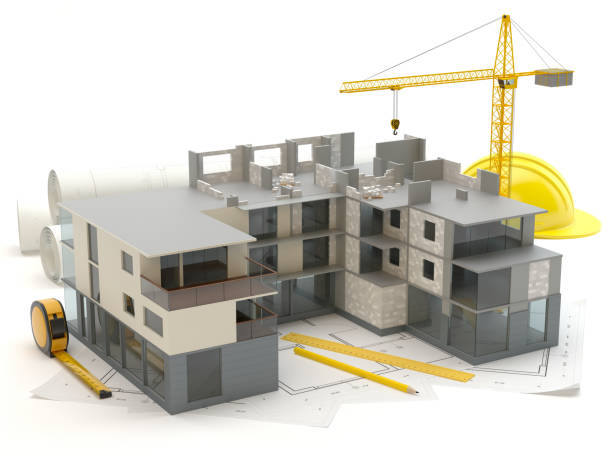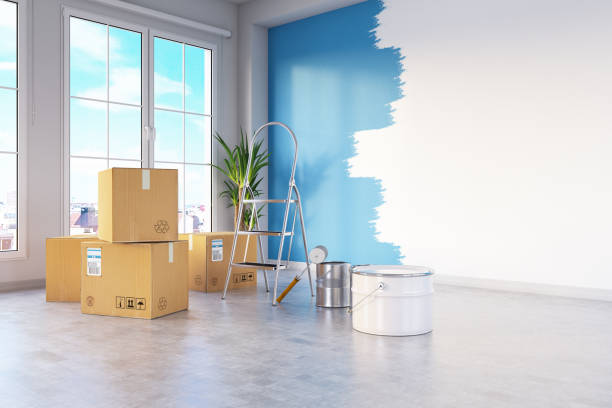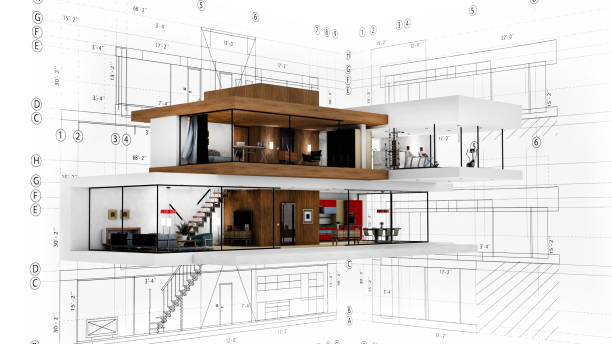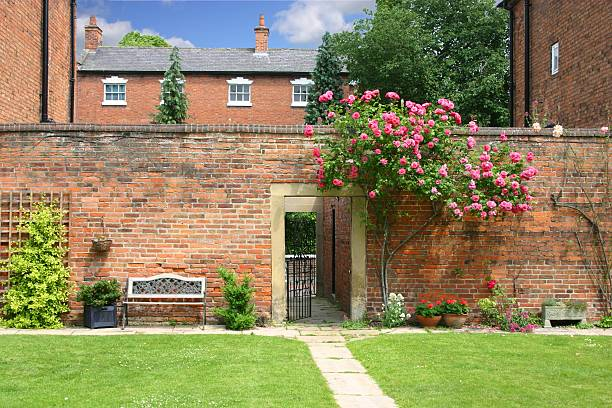Are you looking to elevate the exterior of your building with a smooth and durable high-end finish, or are you thinking about rejuvenating?
Monocouche rendering might be just what you need. Whether you’re a seasoned professional or a DIY enthusiast, mastering the art of monocouche rendering can bring a new level of excellence to your projects.
This comprehensive monocouche rendering guide delves into the render system, exploring its benefits, techniques, and tips for achieving a flawless finish. Get ready to transform your exteriors as we journey to rendering excellence with a monocouche rendering guide.
Understanding What Is Monocouhe Rendering
Monocouche rendering is one of the render systems accomplished through colour and is a popular method of exterior wall finishing.
It involves applying a single coat of pre-mixed render directly onto a substrate, such as brick, blockwork, or concrete. Monocouche rendering takes the basecoat, colour, and finish into a single application, unlike traditional rendering methods that require multiple layers.

Advantages Of Monocouche Rendering
Monocouche rendering offers several advantages.
- Firstly, the monocouche render system typically provides a protective barrier against weathering, moisture, and UV damage, helping to enhance the durability and lifespan of the building’s exterior walls due to its thickness, primarily used by a homeowner.
- Secondly, as cheaper and faster, it can improve thermal insulation as energy-efficient, save heating bills, increase comfort indoors, and does not need to paint.
- Additionally, after monocoque is rendered, you may experience breathability and moisture to escape while maintaining water resistance.
- When properly applied, monocouche render results in a smooth, seamless, and aesthetically pleasing finish. Its versatility makes it suitable for various architectural styles and can be used on new construction projects and renovation work.
It’s important to note that monocouche rendering requires proper preparation, application techniques, and maintenance to achieve optimal results, so choose a monocouche that is the first choice in the UK. Following manufacturer guidelines and consulting with experienced professionals can help ensure a successful and visually appealing finish.
Materials Required For Monocouche Rendering
Monocouche rendering system requires specific materials to achieve a smooth and durable finish. Here are some of the essential materials you’ll need:
Monocouche Render
Monocouche render is a ready-to-use material containing various aggregates, binders, and pigments. It is available in different colours and textures, which allow you to choose the desired aesthetic for your project.
Water
Water is essential for mixing the monocouche render to the right workable consistency. Following the manufacturer’s instructions regarding the water-to-render ratio is essential to ensure optimal results.
Primer
Applying a primer before applying the monocouche render helps improve adhesion and durability and is easy to spread. Choose a primer designed with a monocoque render system to ensure compatibility.
Basecoat
A basecoat is typically used as a preparation layer before applying the monocouche render. It helps level the surface, improves coverage, and enhances the bond between the substrate and the render.

Tools Required For Monocouche Rendering
To successfully apply monocouche render, you’ll need specific tools to facilitate the process. Here are some of the tools you’ll need:
Trowel
A trowel is essential for applying and spreading the monocouche render system onto the surface for high-end. Also, use a hand trowel to achieve an even and consistent application.
Hawk or Board
A hawk or board holds and transports the layers of monocouche as you work. It provides a convenient surface to scoop the render from while working on the wall for pain on top.
Spray Gun or Render Pump
Depending on the size of the project, a spray gun or render pump can be used to apply the monocouche render quickly and efficiently for the overall quality of the monocouche applied. These tools help achieve a uniform coating and save time on larger projects.
Mixing Tools
You’ll need mixing tools such as a drill with a paddle attachment, a mixing bucket, and a mixing stick to ensure the monocouche render is appropriately mixed with water, achieving the desired consistency.
Proper safety procedures and wearing appropriate protective gear, such as gloves and goggles, are essential when working with monocouche rendering materials and tools because rendering protects your house.
Importance Of Preparing The Surface Before Applying Monocouche Render
Proper surface preparation is essential for a successful monocouche rendering application. Here’s why it’s important:
Before applying monocouche render, the surface must be clean, stable, and free from loose debris or contaminants because it is a sand and cement render. That ensures proper adhesion of the render and helps prevent issues such as cracking or delamination. Additionally, preparing the surface allows for better coverage and a more even finish.
Remove any loose or flaking paint, dirt, or moss to prepare the surface. Repair any damaged areas, such as cracks or holes, using an appropriate filler or mortar. It’s also crucial to check the condition of the substrate and ensure it is structurally sound and free from moisture.
Common Issues With Surface Conditions And How To Address Them
Despite careful preparation, certain surface conditions can pose challenges during monocouche rendering. Here are some common issues and how to address them:
Dampness Or Moisture
Moisture trapped within the substrate can lead to adhesion problems and cause the monocouche render to fail. It’s essential to identify and address the source of moisture before application. That may involve repairing plumbing leaks, improving drainage, or implementing waterproofing measures.
Uneven Surfaces
Uneven surfaces can affect the appearance and performance of the render. Before application, ensure the substrate is level and smooth. Use a suitable levelling compound or a base coat to create a consistent surface for the monocouche render.
Lack Of Key
A lack of key refers to a surface that lacks texture or roughness, making it difficult for the render to adhere correctly. To overcome this issue, consider using a suitable primer or an essential coat, creating a textured surface for enhanced adhesion.
Contaminants
Contaminants such as oil, grease, or efflorescence can negatively impact the bond between the render and the substrate. Thoroughly clean the surface using appropriate cleaning agents and techniques to remove contaminants before application.
Properly addressing these surface issues ensures a solid foundation for monocouche rendering. Following manufacturer guidelines and consulting with professionals for specific recommendations based on the project’s requirements is essential.
For a comprehensive guide on monocouche rendering, including step-by-step instructions, troubleshooting, and maintenance tips, refer to reputable resources or seek guidance from experienced professionals in the field.

Step-By-Step Application Process
Mixing the monocouche render correctly and applying it properly is crucial for achieving a high-quality finish. Here’s a step-by-step guide:
Mixing The Render
Follow the manufacturer’s instructions for mixing the monocouche render with water like a regular rendering mix. Use a clean container and mix until you achieve a smooth, lump-free consistency. Keeping the render the same is essential, as this can affect its workability.
Preparing The Surface
As discussed in the previous section, ensure the surface is clean, dry, and adequately prepared. Apply a suitable primer and basecoat if necessary, following manufacturer guidelines.
Applying The Render
Start by loading the hawk or board with the mixed render. Scoop a small amount of render onto the trowel’s edge using a trowel. Apply the render to the surface using upward strokes, working from bottom to top. Maintain a consistent thickness throughout the application.
Dealing With Monocouche Render Problems
Monocouche render can be susceptible to cracking and shrinkage, leading to potential problems with the finish. Here are some common monocouche render problems:
Incorrect Mixing
Improperly mixed monocouche render can result in a weaker bond and an increased risk of cracking. Following the manufacturer’s instructions regarding the water-to-render ratio and mixing time is crucial.
Insufficient Basecoat
Inadequate preparation, including an insufficient basecoat, can compromise the strength and stability of the render. Ensure the surface is primed correctly and levelled before applying the monocouche render.
Rapid Drying
Quick drying due to direct sunlight or hot weather can cause the render to shrink and crack. Avoid applying monocouche render in extreme weather conditions to allow for proper curing.
Maintaining And Caring For Monocouche Render
Maintaining and caring for monocouche render is essential to ensure no need for repainting and keep it looking its best. Here are some recommended practices:
- Regularly inspect the render for any signs of damage, such as cracks or areas where the render has become loose. Promptly address any issues to prevent further deterioration.
- Clean the render periodically to remove dirt, algae, and other stains. Start by rinsing the surface with water to remove loose debris. Use a soft-bristle brush or sponge and a mild detergent solution to scrub the surface, working in small sections gently. Rinse thoroughly with clean water afterwards.
- Avoid using abrasive cleaners or high-pressure washers, as they can damage the render. Additionally, do not use sharp objects or aggressive scraping techniques to remove stains, as this can harm the surface.
- If the render has been painted or coated, follow the manufacturer’s guidelines for specific cleaning instructions.
- Regularly maintain vegetation around the render by trimming any overhanging branches or foliage. That helps prevent algae or moss growth, which can deteriorate the surface over time.
- Keep an eye out for any signs of moisture intrusion or dampness. Address any sources of moisture promptly to prevent damage to the render.
By implementing these maintenance practices and addressing any issues proactively, you can help extend the lifespan of your monocouche render and keep it looking its best for years to come, as well as get rid of monocouche render problems.
Key Takeaways
- Monocouche rendering offers durability, weather resistance, and improved aesthetics for exterior wall finishes, making it a popular choice for professionals and DIY enthusiasts.
- Proper surface preparation is crucial for a successful application, addressing issues like moisture, uneven surfaces, lack of key, and contaminants to ensure a solid foundation for the render.
- Mastering the art of monocouche rendering involves understanding the application process, using the right materials and tools, and implementing maintenance practices to keep the finish looking its best for years to come.
Frequently Asked Questions
What is Monocouche rendering?
Monocouche rendering is a one-coat rendering system that provides a decorative and protective finish to external walls. It is a pre-mixed render that contains all the necessary ingredients, including aggregates, pigments, and binders, providing a single-layer application.
What are the advantages of using Monocouche rendering?
There are several advantages to using Monocouche rendering. Firstly, it saves time and labour as it requires only one coat. It also provides excellent weather resistance, durability, and breathability. Additionally, Monocouche rendering offers a wide range of colours and finishes, enhancing the aesthetics of the building.
Can Monocouche rendering be applied to any substrate?
Monocouche rendering can be applied to various substrates, including brickwork, blockwork, concrete, and timber frames. However, it is essential to prepare the substrate properly by ensuring it is clean, dry, and suitable for rendering. Professional advice should be sought to determine the compatibility of the substrate with Monocouche rendering.
Wrapping up
Mastering the art of monocouche rendering can bring a new level of excellence and smoothness to your exterior projects. By understanding the benefits and techniques of this through-coloured render, you can achieve a flawless, high-end finish that not only enhances the aesthetics of your building but also provides durability and enough protection against the elements.
Remember to prepare your substrate properly, choose high-quality materials, and follow recommended application and maintenance practices.
Whether you’re a professional contractor or a passionate DIYer, investing time and effort into mastering monocouche rendering will pay off in stunning exteriors that stand the test of time. So, embark on this journey to rendering excellence that is the first choice in the UK, and let the beauty of monocouche rendering transform your architectural vision into reality with this monocouche rendering guide.



